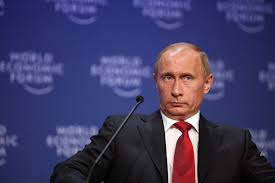
By Aymenn Al-Tamimi, The Daily Beast–
The retaking of the ancient city of Palmyra from the Islamic State (ISIS) by the Syrian regime backed with intense Russian airpower is predictably being hailed as a victory over terrorism. Symbolically, of course, the recapture of Palmyra allows for the regime and Russia to portray themselves as the defenders of civilization over barbarism, as ISIS had destroyed some of the most archaeological sites in the area last year. But what do the events tell us about Russia’s broader approach towards ISIS? What may unfold in the aftermath of Palmyra’s recapture?
Fighting in the vicinity of Palmyra has occurred ever since ISIS took the city in a swift offensive through the Homs desert last year in which regime forces melted away on multiple occasions without much of a fight. This was similar to the losses the regime experienced in Idlib province at the hands of rebel offensives in the same year, pointing to broader problems of manpower shortages facing the regime, which led to a shift in strategy focusing on the defense of perceived vital areas, including setting up of local militia formations such as Coastal Shield in Latakia and Homeland Shield in Suwayda’designed to recruit locals to fight within their own areas. These calculations changed somewhat with the official commencement of Russian intervention in the fall of 2015 in the form of intense airstrikes, allowing the regime to go on the offensive in multiple areas.
Officially, Russia presented its intervention as one targeting ISIS and similar terrorist groups. There was some speculation at the time that Palmyra was therefore a target for Russia, but in fact this front was largely untouched. Now, the role of intense Russian bombardment in the recent Palmyra battle is being presented as evidence that Russia is seriously committed to the fight against ISIS, and certainly, it was the game changer on the battlefield. Over the course of two weeks in this period, the pro-opposition Palmyra Coordination Committee claimed to have documented at least 900 Russian air raids targeting Palmyra. It should also be made clear that the regime made little headway previously on the Palmyra front even with auxiliary militias, who have also played a role in the offensive that took the city, such as the National Ideological Resistance (a Syrian Hezbollah group) and the Navy Seals Regiment (a militia that recruits mostly from the coastal Latakia and Tartous provinces).
However, the recent Russian shift toward targeting ISIS in Palmyra following the announced partial “withdrawal” does not change the fact that over the official course of the intervention, the majority of targets were rebel groups in areas of Latakia, Idlib, Hama and Aleppo, far removed from ISIS despite Russian propaganda insisting on the contrary. In one instance, just north of Aleppo city, the Russian bombardment meant that ISIS was able to seize ground from rebels, changing the front line to one of ISIS versus the regime.
To be sure, though, this is the only clear example whereby Russian airstrikes facilitated an advance for ISIS. Prior to Palmyra, the main initiative launched with Russian support against ISIS was the campaign to break the ISIS siege of Kweiris airbase to the east of Aleppo city. On the ground, this offensive was directed by IRGC Quds Force commander Qasim Soleimani, using a variety of proxy militias including Lebanese Hezbollah, its native Syrian component Quwat al-Ridha and the Iraqi Harakat al-Nujaba’. ISIS launched mobilization efforts in Aleppo province to stop the regime and Iranian advance, but these efforts were a failure.
Since the lifting of the siege of Kweiris, there has been continual fighting on the peripheries with speculation of a regime offensive to take the ISIS stronghold of al-Bab, which was also subjected to Russian bombardment. The inadvertent result of this fighting is that it has actually taken pressure off rebels in north Aleppo countryside fighting ISIS. Thus, when Kurdish YPG-led Syrian Democratic Forces to the west of Azaz took advantage of rebel disarray from the regime’s cutting off the route between Aleppo and Turkey, ISIS did not make any notable gains.
In short, therefore, it is still undeniable that the Russian intervention has mainly hurt rebel groups opposed to ISIS, but ISIS’s ability to exploit that to make its own advances has been rather limited, something exacerbated—unintentionally—by an exceptional initiative against ISIS east of Aleppo city. Already by the time the Russian intervention officially began, internal documentary evidence indicated ISIS was experiencing its own manpower problems, issuing a month-long general amnesty for deserters at the start of October 2015.
Thus, more broadly the loss of Palmyra is another sign that ISIS has more or less passed the peak of its military power on the Syrian battlefield. Looking forward, the most likely targets next are other ISIS-held towns in the Homs desert that were taken from the regime, such as Qaryatayn—also of symbolic importance as home to a Christian minority reduced to second-class citizen status by ISIS—and towns to the northeast of Palmyra. Russia itself likely recognizes the folly of claims that Assad could retake all of Syria, and the initiatives against ISIS should foremost be seen as part of a broader strategy of entrenching the regime’s position domestically and on the international stage. Hence, those looking toward diplomatic engagement in the hopes of finding a political solution should consider the prospects of success in this regard all the more remote.

Leave A Comment
You must be logged in to post a comment.